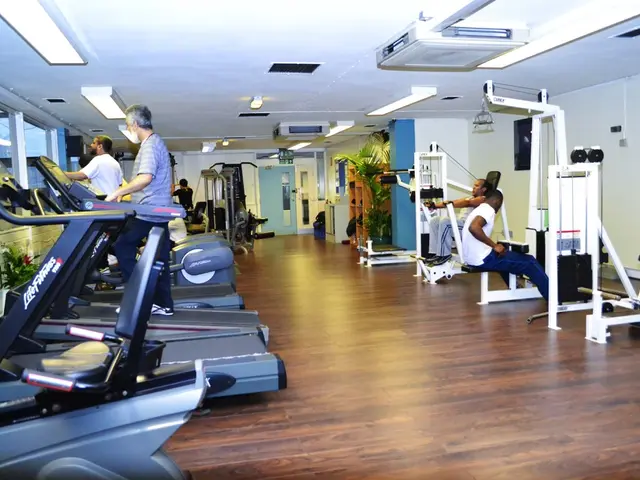Spinal Curvature Comparison: An Insight into Lordosis and Hyperlordosis
Hyperlordosis, often known as swayback, is a condition characterised by an excessive inward curvature of the lower spine, most commonly in the lumbar region. This can result in the abdomen protruding and the buttocks appearing more prominent.
Common causes of hyperlordosis in adults include poor posture and sedentary lifestyles, leading to muscle imbalances, especially weakness in abdominal muscles and tightness in back muscles. Other causes include obesity, spinal conditions such as spondylolisthesis, kyphosis, scoliosis, discitis, or degenerative disc disease, neuromuscular conditions like muscular dystrophy and cerebral palsy, trauma or injury, congenital disorders, osteoporosis, and even certain genetic or developmental spinal abnormalities.
Symptoms of hyperlordosis can include a noticeably exaggerated inward curve of the lower back, swayback posture with hips pushed forward, lower back pain and muscle tightness, and difficulty standing up straight or maintaining posture.
Treatment for hyperlordosis usually involves non-invasive measures such as physical therapy, lifestyle modifications, and spine-specific exercises. Physical therapy aims to strengthen the abdominal muscles, improve core stability, and correct muscle imbalances to realign the spine. Lifestyle modifications may include weight loss if obese and adopting ergonomically sound posture habits. Spine-specific exercises target tightness in the lower back and improve pelvic alignment.
In severe cases, treatment of underlying conditions may be necessary, and surgical intervention may be considered. Regular evaluations by spine specialists are crucial to manage the progression of hyperlordosis and adapt treatment based on the patient’s response.
Preventing hyperlordosis focuses on maintaining a healthy weight, practising good posture, and staying physically active to keep the spine properly aligned and supported.
The American Council on Exercise recommends hip flexor stretches, Cat-Cow Pose, and supine hollowing for people with hyperlordosis. However, it is essential to consult a healthcare professional for safe and effective exercises tailored to individual needs, such as physical therapists or trainers specialising in these conditions.
If a person has symptoms of an injury or a medical condition that can cause hyperlordosis, it is crucial to seek medical advice to diagnose the underlying cause. This may involve additional tests to determine the root cause and appropriate treatment.
- Multiple underlying causes of hyperlordosis can be attributed to factors such as poor posture, sedentary lifestyles, obesity, spinal conditions like scoliosis or kyphosis, neuromuscular conditions, trauma, congenital disorders, osteoporosis, and genetic or developmental spinal abnormalities.
- Type 2 diabetes and depression are not directly linked to hyperlordosis, but it's essential to maintain overall health-and-wellness when dealing with such medical conditions to prevent additional complications.
- The predictive analysis of hyperlordosis progression can be challenging due to the multifaceted nature of its causes and personal health factors, making regular medical evaluations crucial for effective management and treatment.
- Prep for physical therapy sessions for hyperlordosis treatment might include researching related medical-conditions like rheumatoid arthritis (RA), multiple sclerosis (MS), ankylosing spondylitis (AQ), or alzheimers, as their symptoms could influence the therapeutic approach.
- In collaboration with a healthcare professional, science and medical research could help develop new, more efficient predictive and treatment models for managing hyperlordosis and other health-and-wellness issues.
- During back painkillers preparation, it's necessary to consider possible drug interactions with other medications used to treat related conditions like diabetes or HIV, ensuring that the treatment doesn't aggravate existing health issues.
- Adhering to a healthy lifestyle, consisting of a balanced diet, regular exercise, and good posture habits, may help reduce the risk of onset or worsening of conditions like hyperlordosis, obesity, and diabetes.
- School health programs might instigate awareness campaigns focusing on maintaining good posture to decrease the prevalence of hyperlordosis and promote overall health-and-wellness among students.
- Medically-assisted weight loss programs could be an option for those struggling with obesity and hyperlordosis, although it's essential to consult a healthcare professional for advice and guidance on appropriate interventions.
- Seeking professional opinions from spine specialists, physical therapists, or medical professionals who specialize in health-and-wellness conditions is paramount when dealing with symptoms related to hyperlordosis or suspected underlying causes.




